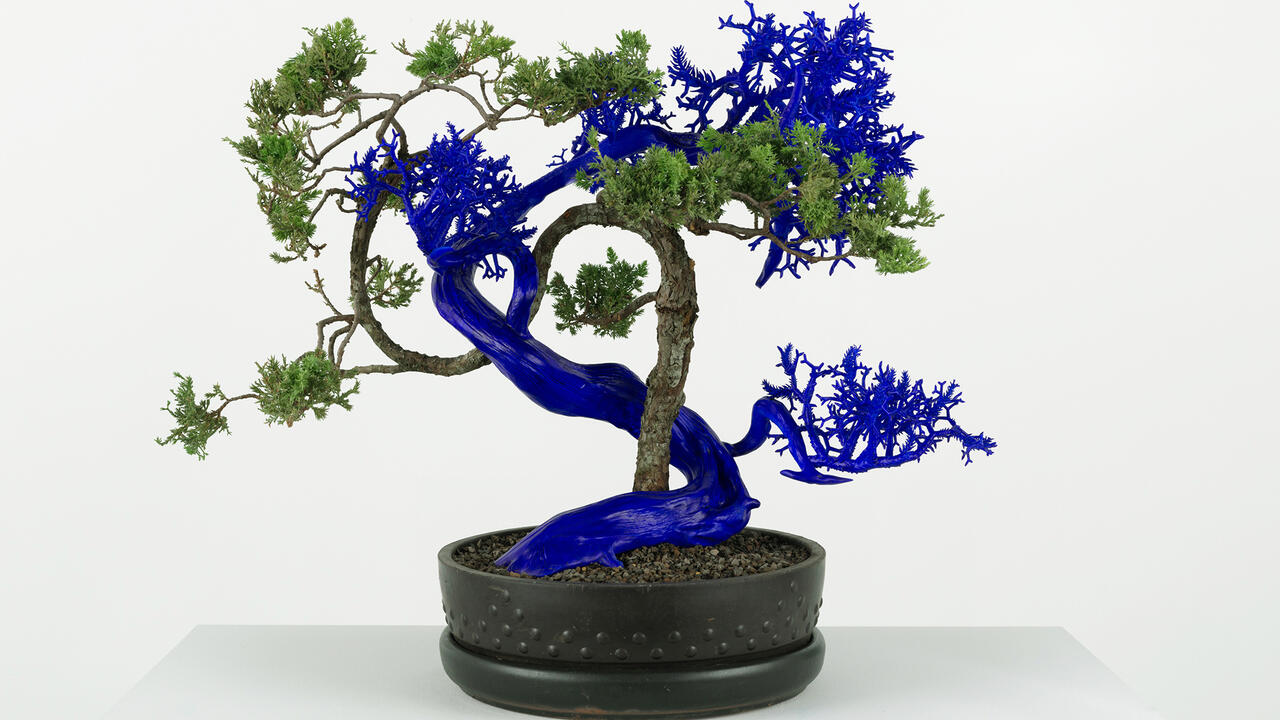Hayley Silverman, ‘Entering Heaven Alive’
Bodega, New York, USA
Bodega, New York, USA

‘I am not in this world to live up to your expectations,’ reads the ‘Gestalt Prayer’, written by German psychotherapist Fritz Perls in 1969. ‘You are you, and I am I, and if by chance we find each other, it’s beautiful. If not, it can’t be helped.’ This prayer is written on You Are You, and I Am I (all works 2018), one of the pieces in Hayley Silverman’s solo exhibition, ‘Entering Heaven Alive.’ This work uses silver and gold leaf-covered plywood as both a backdrop and a stage for the text, which is handwritten on a palm-sized, white, dress-shaped cut-out. (A larger version of the sculpture was included in Silverman’s inaugural show at Bodega in 2015.) With it, Silverman prompts a central question of the exhibition: How can anyone truly find anyone else?
The lights at Bodega were off when I entered the gallery in the afternoon; some daylight crept in, but the space was mainly lit by two overhead projectors – each covered by decorative glass bowls and coloured transparencies – placed on the floor near the entrance. As a result, the walls were cast in hints of red, white and blue – not exactly an American flag, more like the memory of a dream of an American flag. The buttons on the projectors offered four settings (locked or unlocked, on or off), but Silverman’s work moves beyond these mechanical binaries, into the liminal space between life and death. In this exhibition, nothing is explicitly ‘on’ or ‘off’.

The eponymous Entering Heaven Alive is a glass flower made of phosphor coating and xenon. With its green stem and pink petals, it resembles a stargazer lily, which grows best in direct sunlight. Here, though, it is presented in the darkest corner of the gallery, lit only by the constant flickering of the xenon, as if it might go out at any second. In The Custodian, a photograph credited to both Silverman and Emily Shinada, an elderly woman rests her head on someone’s lap and looks directly into the camera. Her expression is obscure: is she feeling pain, or is that a hint of relief in her face? As we step in to get a closer look, we see our own face reflected in the chrome frame, and the red and white light from the projectors gives the photo an ethereal pink hue.
In these new works, Silverman is preoccupied with the possibilities of reflective surfaces, using them as a way to both invite and confront the viewer. In Service Destiny, a small mirror is placed in front of a ceramic angel figurine’s head. Standing before it, we must decide which part of ourselves to observe: there is only room for one eye at a time. In order to see their reflection in the bronze surface of another piece, Shrinking World, the viewer must place their head so close to the wall that their ear nearly rests against it – the stance someone might take if they were trying to hear someone speaking in another room. By guiding the viewer’s movement, Silverman allows us to imagine a blurring of the borders between one world and the next.

On the reverse of You Are You, and I Am I, Silverman printed an excerpt from Langston Hughes’s 1949 poem, ‘Theme for English B’, with the text only readable through its reflection in a mirror on the wall. It begins: ‘You are white – / yet a part of me, as I am a part of you. / That’s American. / Sometimes perhaps you don’t want to be a part of me. / Nor do I often want to be a part of you. / But we are, that’s true!’ By engaging in these transitory states, Silverman effectively presents a US all her own: a country that demands inquiry, a world without expectations, a room filled with angels.
Hayley Silverman, ‘Entering Heaven Alive’ runs at Bodega, New York until 18 February.
Main image: Hayley Silverman, To Exist is to Survive Unfair Choices, 2018, hand-blown glass bird, Raggedy Ann doll, LED light, 15 x 64 x 36 cm, installation view, Bodega, New York. Courtesy: Bodega, New York
























